#Freedom Quilting Bee
Explore tagged Tumblr posts
Text
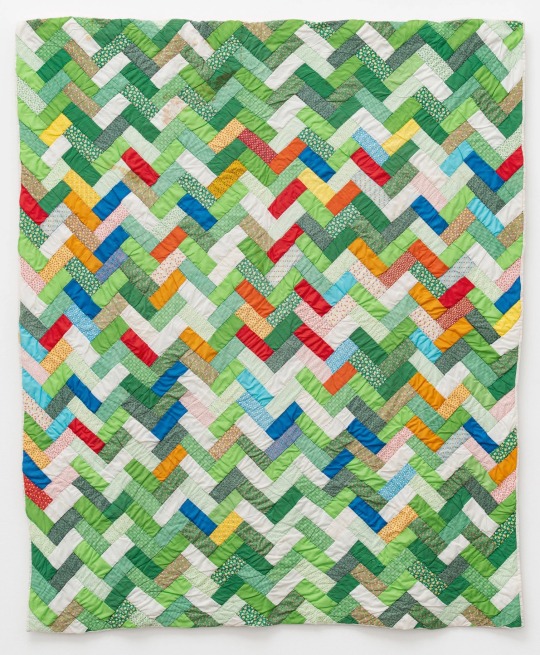
Candis Mosely Pettway
Coat of Many Colors
1970
#quilt#quilting#quiltblr#quilt making#gee’s bend#gees bend#freedom quilting bee#quilting bee#women artists#american art#art history#modern art#aesthetictumblr#tumblrpictures#tumblrpic#african american art#black artists#tumblrstyle#tumblr art#tumblrposts#aesthetic#Candis Mosely Pettway
158 notes
·
View notes
Note
Hello! how you doing?? may i request for your event , epel with a fluffy platonic ''long distance relationship" ?
and as my backup i thought of riddle with ''farmer's market'' , like a funny romantic outing
and i think you said 2 backups ... if you then stargazing with azul , romantic hurt/comfort
i'm not used to requesting so if i did anything wrong sorry oopsie i didn't mean too 😅
Long-Distance Relationship; Epel Felmier
Content; Fluff, gender-neutral reader, platonic
Word Count; 650+
AN; Everything looks great, no need to worry! I hope you enjoy this, and the friendship with Epel! As a reminder, do not put my work — or others for that matter — into AI as it steals. Link to Masterlist

This summer had been quiet, with Professor Trein basically threatening Crowley to let you stay with him. But it was nice. You had a nice room with overstuffed pillows and old quilts. And an actually nice bed that didn’t have any springs poking out of it. After the chaos that had been the school-year, it was nice having a stable home environment. Also Trein gave you the freedom you needed, and didn’t hover, but was there when you needed him.
“Another letter arrived for you,” the older man said while waiting for his morning cup of tea to cool down. “From Felmier.”
Epel couldn’t come to visit as often as the others, as he was busy at the farm and doing promotional work to help bring Felmier Farms into the public’s eye. But he sent a letter every week, each with an apple stamp.
You opened the letter, curbing your excitement. There was rarely anything super exciting in them, but it was still nice to read what Epel got into.
Meemaw says I should be able to visit next week! So be prepared for a lot of stuff; could ‘have sworn you’re her grandkid an’ not me. Hope you like kitschy apple-themed clothes.
Epel is coming. Epel is coming! You hadn’t seen him in over a month, and the last time you did he was working the family stand at the farmer’s market. You couldn’t really catch up then, but now, now you could. You could finally catch up with your best friend. “Is it okay if Epel comes over?”
Trein looked up from the book he was reading and gave you a curt nod before going back to his book and morning cup of tea
Places to go with Epel;
You had started to make a list, but nothing was really coming to you. You didn’t know many other places save for Night Raven College, and the small village where Trein, and now you, resided. Sighing, you spun in your chair, thinking. Epel was arriving tomorrow and you had jack-all planned. And sure, just catching up and hanging inside the home or out in the yard was nice and all, but you wanted to do something. “Come on brain, be smart,” you sighed, plopping down on the bed and groaning. Maybe some sleep would hel- “Epel?”
And standing outside your window was none other than Epel Felmier, carrying a backpack and an amusingly large box. He was moving his mouth, but you couldn’t make out what he was saying. Getting up, you moved towards the window and pushed it up.
“-et me in, these damn skeeters are eatin’ me alive,” is what you heard upon opening the window. And there were indeed a few mosquitoes trying their hardest to make a midnight snack out of your friend. “Long time no see, huh?”
You moved aside so he could let himself in. he was early, in the letter he said he’d be arriving tomorrow right after lunch. But Epel was here, in the middle of the night, hauling a large wooden crate into your room. “Yeah, but what are you doing here Epel?”
He let out a grunt as the wood crate finally got through the threshold of the window. “Visiting, like I said… Pa dropped me off early but I had some runnin’ around to do.” He reached into his pocket and handed you a small bee keychain. “Gotcha this in town, since you’re a busy bee.”
You lightly punched his shoulder, as you knew Trein would give the both of you a questioning look, but you were happy to see Epel. “So, what horrors did Marja send?” You peaked into the wooden crate.
Epel grabbed out a cardigan made of granny squares with apples and apple blossoms instead of daisies. “Matching sweaters,” he said with mock fear in his voice.
The two of you laughed though, as it was a sweet action, and once it started to cool off, the both of you would wear them together; like the cheesy matching outfits parents put siblings in.
#dove does events#100 follower event#twst#twst x reader#twst x gn reader#twisted wonderland#twisted wonderland x reader#twisted wonderland x gn reader#epel felmier#epel felmier x reader#epel felmier x gn reader#<- all platonic#epel felmier fluff#platonic twst#i need that sweater now; not want; NEED; it is an essential item#also decided that this reader would live with trein for the summer since trein has actual experience with being a RESPONSIBLE guardian#epel “these damn skeeters” felmier#also a bit different formatting for this one#all of the letters have lil' apple stamps#marja loves you like her own grandkid and pinches your cheeks#melice!#enjoy the epel ^v^
161 notes
·
View notes
Note
Daily ask №12
Hobby edition!
Firstly, Author, what is YOUR favourite hobby? Besides writing? Mine is probably text roleplay if you're curious : D
I'm pretty sure that there was a list of hobbies for each character somewhere z or at least I've seen it written down that Tubbo likes gardening, but still, what is each character's hobby/hobbees?
Hobby swap. Every hobby gets sent to the person arter them in the order that you answered the second question in. How well does it go?
I do still remember that you wrote that Wilbur figures out that it has no hobbies when he doesn't have to get food so I suggest: Photography. I mean, they're already travelling through the USA and considering the fact that the foundation forgot about their existence they might as well have some fun and not hide constantly yk. Climb onto the statue of freedom or something. Why not. Might as well keep some memories!
Also it would just bee kinda ironic if Wilbur who has like the void thing which is the absence of light, photography as a hobby which is essentially capturing light.
5. What hobbies do you think whatever character/s would enjoy but aren't able to do due to their situation?
Man I don't think this one has an ounce of spoilers for Fault or content warnings!
1.Drawing. I find my drawing and writing is a very symbiotic process that keeps up passion about projects. I write a cool scene so I want to draw it, and while doing that I’m thinking about the story. Or I draw something sick as hell and am like well now I gotta put that in. I also like dnd but don’t play much alas.
2.I realized I was addressing the 5th question a little, so I’m going to put asterisks next to functional hobbies that they’re able to do on the run.
Tubbo gets the most exploration of hobbies due to the interlude WHiT Croplands. Tubbo definitely likes gardening because of Rhodes, though it’s also kinda cheating since flowers auto bloom once exposed to Tubbo long enough. Rosalind also has a lot of hobbies, and a bit of a problem with starting a new thing only to abandon it for the next project. So quilting*, painting, knitting. Tubbo also enjoys the Pokémon franchise. And they’re a dirty cheat at monopoly, can’t trust that guy at all. Also likes messing around in photoshop since they had an Instagram and needed to learn how to look like they badly photoshopped themselves into looking like a bug fairy thing.
Philza is seen doing a lot of meditating*, which is good for an embodiment of wrath. He’s probably picked up thousands of hobbies at one time or another. On speculation, he’s drawn to hobbies that involve fire and absolutely adores how creative humans are. Like part of Phil becoming a person was deffo influenced by humans changing the symbolic meaning of fire to include creation and protection. So metal work, glassblowing, anything with a combustion engine, etc. Philza was absolutely invested in the space race to an inordinate degree since they’re going into space with ROCKETS! He’s into cooking* and has a lot of random recipes that are nostalgic and tied to previous Collected. I can also see him doing a bonsai tree thing but like with a whole forest. Like sculpting how it grows over a few centuries. Ever see tree braiding?
I’m not sure if The Blade necessarily likes playing video games? I think he views it as a safe way to let The Blood God and voices go ham and appease their cries for slaughter. So it’s more The Blade disassociating while The Blood God plays, so I guess that makes video games his hobby instead. The Blood God finds it a little demeaning of his capabilities but at least The Blade is letting him out? His hooves and size would make it somewhat difficult, so probably tends towards turn based strategy games. The Blade does not let anyone around him when gaming for safety. The Blade personally prefers reading*, which is like narrating for an audience. The voices get really into it, and The Blade gets goofy and dramatic with it. It is difficult without his glasses tho given pigs are hyperopic.
Tommy likes video games, watching scary movies his mum forbid, and goofing around with his friends. He also gets into drawing at the Foundation using either his Red or Ros’ crayons. Not uh good at it but still it’s enrichment.
Wilbur has music* and that kinda it. A bit of a risk with instruments, given that’s extra weight to carry and the void could eat it but after a few messy obliterations over scratches the void has gotten the memo kinda. Wilbur likes the act of creating stuff to spit in the face of the void, but anything it makes runs the risk of eventually getting eaten by the void, which would really upset it. But music itself isn’t a physical object and so is safer. It’s a big coping mechanism for him to help calm down and control the void. The Foundation tried to ruin music for him but it didn’t work.
3.Tubbos wide array of hobbies would mesh well with Philza’s, and the gardening already aligns with the forest maintenance I hypothesized.
The Blade can’t meditate. He just can’t. He and Phil have a convo about it in the whumptober prompts thing since he’s frustrated meditating isn’t working and Phil just blinks and is like ‘? Why would my coping mechanisms be tailored to you? Come on mate let’s find something suited for you.’ All the fire related hobbies would also be no bueno bc he is very fluffy and very flammable. Might go for cooking tho, but on the whole he’s lazy and can just eat things raw so why bother.
Video games work out for Tommy, though I don’t think he’d be a fan of strat games. Reading is tricky with Red though, he needs someone else to hold a book. There’s a deleted scene where Tubbo and Tommy help each other read a book between the Red and dyslexia, with The Blade spoiling things and the pair getting salty.
Video games would drive Wilbur crazy since it doesn’t have the cultural background for them at all. Ever seen a grandparent try to play Minecraft? Plus he doesn’t like staying still in one place too long. Maybe a DS would work until the void tries to eat the cartridge. Scary movies don’t do anything to Wilbur because he IS a scary movie. And drawings are the worse for it since 1. Probably accidentally incorporates an evil rune subconsciously and gets cursed 2. Paper is Tastey snacc for void and prone to getting snapped up.
Tubbo canonically is bad at singing. I get the vibe Rosalind played the viola in middle school ? Sheet music can be rough on dyslexia though you can do stuff like use colored highlighters for different notes, though I don’t think Wil uses sheet music. They’d try to figure out simple tunes, very basic stuff. Tubbo wouldn’t be good but they’d have fun and annoy Wilbur.
4.There is the problem of photos getting eaten. I think he could convince the void that the camera itself is a dangerous creature that could vaporize them in a single flash of light if threatened. But if it could get the photos safe it would be a really good thing to help with its memory. Like visible proof xyz happened. Though I imagine what Wilbur and a human think is worth photographing is very different. Wilbur would have a blurry picture of a road captioned with something like ‘tastiest asphalt in Indiana’. Picture of random camping site ‘place where Phil admitted I was his favorite (this was not under duress)’. Picture of a lumpy cloud ‘if I got tall enough could I eat a cloud’
5. If Tubbo did beekeeping would that be like Mickey keeping Pluto as a pet.
Wilbur NEEDS to be in theater. Ideal enrichment for its dramatic soul. Interact with humans in a normal setting would be fantastic to work on the racism problem. It’s also the perfect medium for him since a performance is a one time thing that can’t be destroyed after the fact. Its main hold back would be the bad memory, but I think learning to value non survival memories could actually improve its memory and priorities. Theater is like 3 different character arcs for him. Also put him in a hot dog eating contest. I need Joey Chestnut to taste overwhelming loss.
Also put Tommy in an improv troop he needs it. Or therapy. He needs therapy as a hobby.
Alas having fingers holds The Blade back from a lot of things. But I think it would be funny to plop that man in a furry convention and try to scam people into giving him money to also make them giant crazy realistic suits. Would he do this. Never. It would be mean and require talking to a lot of people. However. It would be hysterical.
Back in Philza’s day, you could just be a leviathan monster in the ocean and eat entire whaling ships. But now you can’t anymore. Becuase woke.
#sbi scp au#fault au#tommyinnit#philza#technoblade#tubbo#scp wilbur#scp tubbo#scp technoblade#scp tommyinnit#scp philza#sbi au#sbi#dsmp#ask#wlwdwtys ask#what DOES that username mean btw#like women love women dont worry thank you so ?#something to nom on
16 notes
·
View notes
Text
The Quilters of Gee's Bend
To celebrate International Women's Day, but also because I think everyone should know these amazing women artists

Gee's Bend is an isolated, rural community in southwestern Alabama. It is a community originally formed by the emancipated peoples of the cotton plantation of Joseph Gee, on the former plantation lands. They worked the land as cotton sharecroppers until a Depression-era Federal program helped residents acquire the land outright.
Quilting began as a necessity in the 19th century. Women in the community quilted with whatever little scraps of leftover or worn fabric they could procure - patchwork quilting. This led to a style of quilting very different from more regularized patterns; forms were more freeform and dictated by the shape of the fabric at hand. The Gee's Bend patchwork style was passed down through generations of families living in the community; it came to develop it's own artistic "fingerprint" through the isolation of the community.
By the 1960s the economy in the rural area was very bad due to the continuing fall in cotton prices over decades. As a way to supplement community incomes, the local quilters formed the Freedom Quilting Bee, a workers' cooperative that gave them a forum for selling their quilts. The quilts quickly became sought after by collectors, due to their daring abstract patterns, which so seemed to echo and interact with ongoing "high art" stylistic progression of the 20th century. Gee's Bend quilts today are still some of the most sought after and valued.

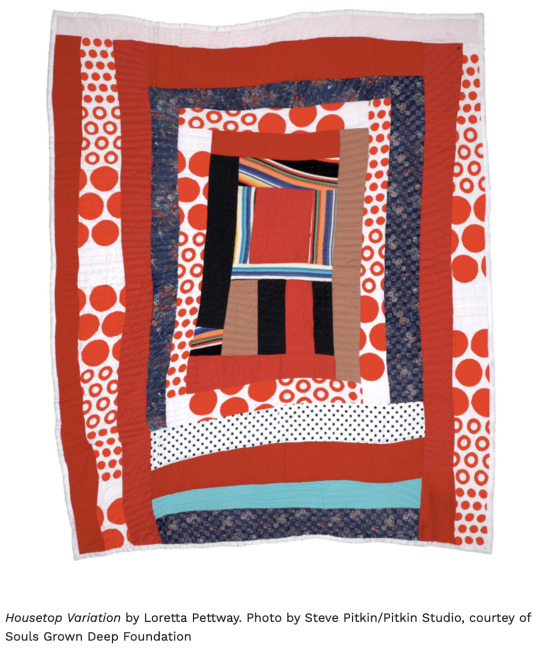


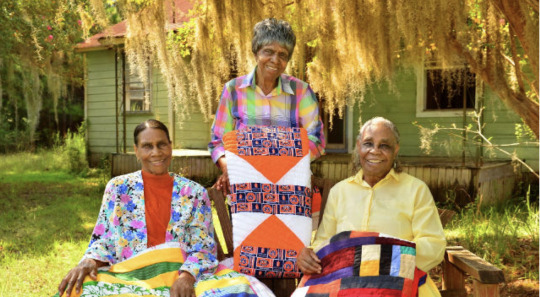
Quilters Loretta Pettway, Lucy Mingo, and Mary Lee Bendolph photographed in 2015 for the NEA National Heritage Award
Please take a look at the Souls Grown Deep Foundation website, where you can learn more about the individual quilters, see more images of their works, and learn more about the community.
76 notes
·
View notes
Text
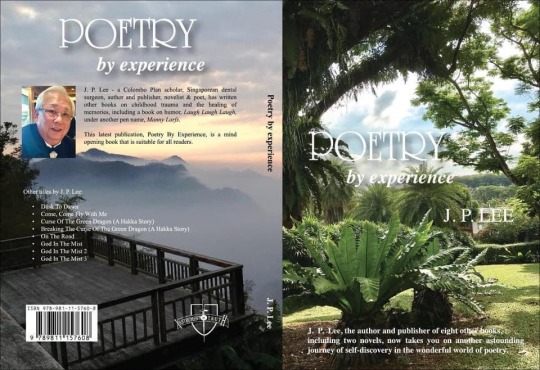


Today is the sixth anniversary of my first poetry book, Poetry By Experience. I have taken three rather long poems from my book (collectively titled, A Trilogy of Poems, Parts 1, 2 and 3), and put them into one poem. It is now a really long poem. I have decided to post them for poetry lovers and for my fans from various poetry groups, to share my joy on the sixth anniversary of my book - edited, and neatly re-compiled into one poetic story.
I hope you like it. It’s entitled:
REMNANT MEMORIES OF HOME
(An Anniversary Re-compilation)
FAIR LAND of glory loveliest song of morn
Smiling parks red roses set among thorns
Eager are the pigtailed gals busy to pick
Gallant swains fall in line ready quick
Gay day begins with a cheerful visit
Butterflies flapping floating in their flit
Love songs from the robins for one and all
Joy of my youth ever pleasing as I recall
Blooms linger when seasons cause delay
Young hearts get patient to wait and stay
Innocence and ease enrich my simple life
Nature overrides all hardship and strife
Simple folks endear in humble happiness
My daily loitering brings surplus gladness
Pausing to admire the glory of dawn
Watching the deer with her little fawn
Grazing on tapestry green by the slope
While bees and grasshoppers shyly elope
I dream of the maiden I secretly love
Like cooing doves wooing in their cove
Crossing quiet brook to watch her charm
Yonder fence lies her cultivated rainbow farm
I bless the approaching brilliance of day
When all around me freely lend a play
Contentment fills my soul cheers my heart
A pastime frolicking joyfully never to part
Simple pleasures and joys in sweet succession come
Dancing pairs bring sweet memories for dreams at home
Restful sleep follows in peace when the day is done
Alas! These lovely charms are past and gone.
FOR greed has turned thy greens to yellow
No encore, no cheer, from grass to fellow
To the north, a new field, thy children flee
From the womb of Mother Earth set free
Freedom stings not numbing thy pain
New owners destroying thy smiling plain
Thy glassy brooks no longer reflect
Mossy paths mirroring a land neglect
Fallen leaves of nests for charging ants
Echoing the loud cry of thy poor vagrants
Wealth accumulates as thy land decays
Dry wind carries its stink day after day
Peasantry once gay now in great despair
Humbled down to breathe its own foul air
Times have altered thy once fair train
Rolling swiftly to dispossess thy grain
Thy packed lawn of fond cheering crowd
Empty, without the sportsmen’s shout
Devoid of the clapping scene of delights
The polo ponies run their winning flights
Looking across the sea on its weary shore
Generous provisions shall come no more
Bitter sweet is the sense of dreaded hour
To face the tyrant in his rigorous power
Covering the solitary rounds in wandering
Hopping along rugged paths, staggering
Awakened memories roam thy present ruins again
Capture my heart but changing to the past in vain
In all my loiterings on thy plains, O Mother Care
I now see the gifts of griefs I have to bear
Give me hope in one Almighty I can trust
Not to reason, only doing thy will I must
That I may come home to write my story
Around a fireplace to tell all its history
What I have seen, learned or knew,
Willingly to be buried, reborn in you
POVERTY drives us to a different shore
With a promise for hope that there is more
Is this a greener pasture, a new found joy?
Not a splendor but a treacherous decoy
Groups cramped in pigeon holes on a stand
Large families packed in a home without a land
Hoisted home up in the sky swiftly built
No warm blankets just share a family quilt
Good Heavens! Greater sorrow newly imposed
Hard labour! Native walks no chance to be proposed
O Fair Land, why hast thou caused us to leave
To this distant shore unknown, far more aggrieved?
Do thou, o sweet Mother, weep in vain
Thine fair tribes now add on to thy pain?
Thine children knock at doors for bread
Chilling bones in hunger desperation led
Good neighbors forced to sell their daughters
Not through any faults of theirs that they should falter
Bless me - why, had we brothers any sister
Our decision would not have been better
Painful to watch sweet little girls in tears
Pretty innocents in their helpless years
I weep as I watch them in their charms
Shaking wildly in their fathers' arms
Grieving mothers kiss their mindless babes
Strike their breasts looking skyward sadly in gapes
I see the fairies and nymphs degraded
In my dreams I see my heaven has faded
These are the hard truth in times of shame
Best to forget, needless to share, no one to blame
In the city their statesmen talk as their ale goes round
Laughing, cheering with haughty looks profound
Such luxury migrants can ill afford
Even simple pleasures dismiss accord
Wealthy men arrive from world around
Suits and hats stunning ladies surround
A wanton wealth designed in tempting display
Painful truth in my mind I mindlessly survey
For I am sickened by this man-made pleasure
Toiling in the distrusting hearts of false leisure
Accumulated wealth stored in pride
Buy a lass to play as an obedient bride
Repossess the cuddly space of the poor
For their horses, hounds and more
Lawful acquisition to rob the timid folks
Stealing their meals of oats and yolks
Dressing up their females well adorned
To reign secured while simple folks mourn
Statesmen to their sons divide the wealth acquired
To their siblings, wives, married relatives
as required.
Beating my chest in sweet memory
recall
In senses with unfailing truth reveal it all
Oh past the plain the surging joy prevail
That which I have loved can never fail
That broken teacups I have taken with me
Stirs my will daily sipping my humble tea
No tales no news from barbers or farmers
It's fine - all return at meals as we gather
No theatre, no ballad, no talent time
Everything comes handy in sublime
Make our own feathered balls and stuff
Marbles rolling, guessing games and bluff
Obscure yet it sinks deep in our souls and hearts
Those simple treasures, everlasting will not part
My vacant mind frolicking in the pond
Caress my soul, my spirit neatly bond
Contented on my stool writing my poetry
Pass my time in imagined peasantry
Raise my native strength for greater gain
Instead of indulging in pitiful afflicted pain
Plant my seeds, pull out the weeds annoy
With compliments from God, my daily joy.
©Johnny J P Lee
25 May 2023
#poetryportal#writerscreeds#inkstainsandheartbeats#bitsofstarglow#poeticstories#spilledwords#writingthestorm#poetscommunity
13 notes
·
View notes
Text

African American quilts in the vicinity of the Alabama River (possibly Gee’s Bend), Wilcox County, Alabama. Photograph attributed to Edith Morgan, circa 1900. Image courtesy Souls Grown Deep Foundation
0 notes
Text

Freedom Quilting Bee and Mary Heilmann at BAMPFA for 'Making Their Mark'
❤️💛💚💙🖤🤍
0 notes
Photo

Women of the all-Black cooperative at the Martin Luther King Freedom Quilting Bee headquarters hand sewing quilts, Alberta, Alabama. (Photo by Henry Groskinsky/The LIFE Picture Collection via Getty Images)
22 notes
·
View notes
Text
Quilt Commissions are CLOSED until 2023
If you’ve been waiting to commission me, the wait is over. Head over here to my commission page and check out the options. Make sure you look over my gallery to see if my style is what you’re interested in.
Also, make sure you check out my policies. This is very important and may clear up any question you might have.
A few examples of my work to get things flowing and spark your interest. I make things as small as 1.5x1.5 inches (pins and magnets) and as large as queen size quilts. Table runners (these double as altar mats), place mats, wallhangings, wheelchair quilts, all sorts of fun stuff!
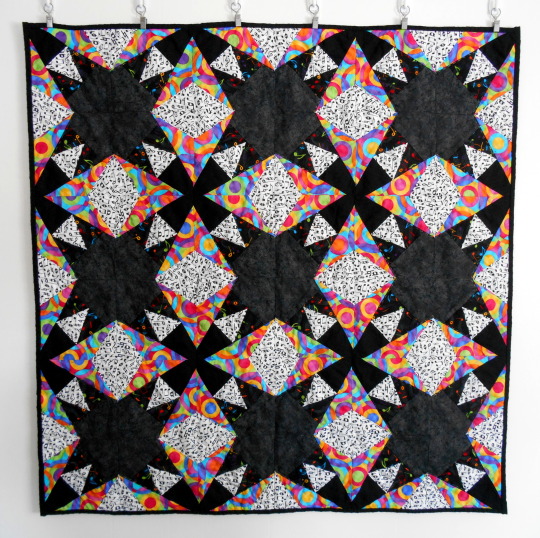
I have several options available with patterns chosen and fabric pulled. These are ideal for those of you who know you want something, but not sure what, or may be nervous or intimidated.
How to decide on what it is you want: A vague idea is much easier to work with than being too specific. Here’s an example of how to describe what it is you want.
Nope: Saying you want a "blue and white" quilt is easier to work with than "I want it to have birds and bees in blue and white, but no solids at all, it must all be prints. I want you to use only two shades of blue and a white that really stands out. If I see any other prints than birds and bees I will be very upset because this is the only thing I want. I like warm blues, not that cold ones, but nothing too warm. Please keep your handquilting to 12 stitches per inch; I like the fancy look but don't want machine quilting because I don't like the way it feels."
Yup: Instead, a picture or idea of what you want, what you don't want, and overall very flexible. I have a repeat client who sends me a picture of color swatches and tells me the mood she wants it to have. Thus far, she has been thrilled with the results. My favorite has been "black, outer space but not too open, and some glitter. Here's the color swatch. I like these quilt patterns, but will they work with this?"
Big Yup: Full artistic freedom! Just give me the color swatches of what you want, and I’ll take it from there. Include that in the note when you pick the commission though.
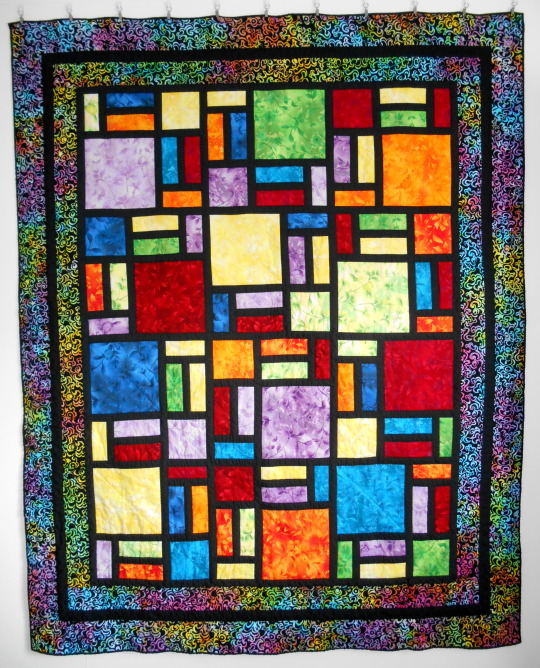
I have thousands of patterns in my collection that I can use. Yes, thousands. The colors or prints you choose will help me determine what will work best. Please, trust that I will create something wonderful. I’ve yet to disappoint a client. Here’s the link to the page I have set up for reviews. Ko-Fi doesn’t yet offer a review option, so I put this together. Many of my buyers are on tumblr and may be willing to confirm the items they purchased/commissioned. I used to be on Etsy and have reviews there as well.
Keep in mind many quilts will take over 100 hours to make, resulting in them taking several weeks and even months to finish. Prices are based on the estimated time and labor these will take. It's general pricing, and kept lower than their true value in order to make these more affordable for more people. If you feel these cost too much and are unwilling to pay weekly or monthly, move on. The prices are not up for debate.
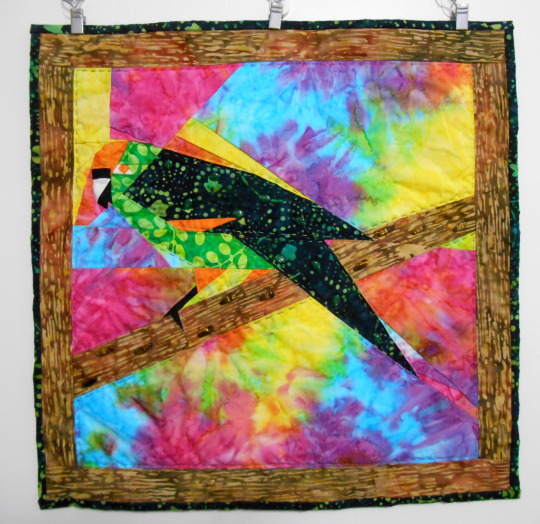
The pattern you want me to use may not work well with the fabric color/prints you choose. Please trust me to create something beautiful and unique. You may give me a few examples of what you want, but again, they may not work well with what you have in mind. If you want me to use a specific pattern, give me a general color scheme (color swatches are welcomed), even a mood you wish it to have, and I can work with that. If you want me to use a specific print or fabric collection, understand that not all prints work with all patterns.
If you're uncertain the size you want fits in any of the commission listings, please contact me regarding this.
Please look through my gallery to get a feel for what I make. My style may not fit what you're looking for, and that's perfectly acceptable. There are many quilters out there with different styles.
If you have any questions, don't be shy about asking.
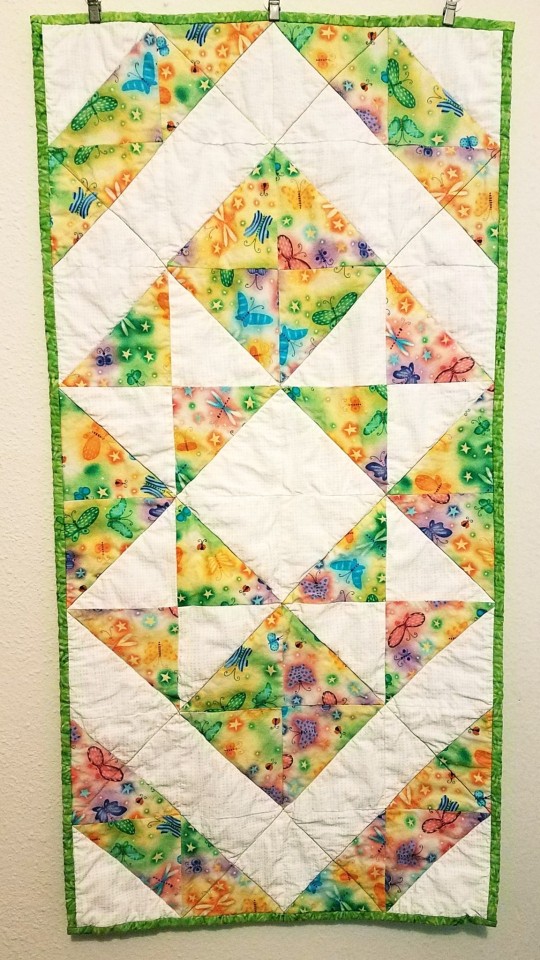
I will likely reopen commissions in January or February, providing time to save up for a custom piece. After I finish current commissions and raffle prizes, I will start stocking up the shop.
#commission status#commission information#handmade#Handcrafts#artist on tumblr#commissions close August 31st and will reopen in 2023
850 notes
·
View notes
Text
Stitch n Glitch Part 2
So I made a post about the states having a knitting circle of sorts called Stitch and [Glitch]. And this is just a part 2 of that/I figured out more of the past and founding.
Origins: Alabama and Kentucky.
Both are heavily into sewing based activities. Embroidery, quilting, tailoring. If it’s a thread and needle they like it. Kentucky is way more on the quilt side. (I mean, there’s an entire quilt museum in Kentucky! And a superstition that a star quilt on a bed will protect you from evil spirits). But Alabama also likes quilting. Especially after the Freedom Quilting Bee. He does stick to just one pattern over and over. The Pine Burr Pattern. Which is the state quilt.
It drives Kentucky wild that Alabama does the same quilt design over and over.
They can both mend and make clothes if needed to. All states can mend clothes to a certain degree. But for the South they would ask Kentucky or Alabama depending on who was available.
The best tailor of the house/out of the states in New York. He makes and mends lots of clothing for Broadway plays, so he knows how to do really nice looking stitches and such. He does however charge a fee.
The Stith N Glitch got started when Kentucky and Alabama could just not figure out how to mend something. It took them over a week before they decided to stop by New York and ask him for help. New York did. And he did it in an hour.
Surprisingly, he didn’t charge them. He did kinda make them sit with him while he [glitched] about something that had been bugging him. And after that they made it a weekly thing.
And since then the circle grew. Not everybody can make every meeting though. New York especially has been busy lately. But he loves the gossip. And it gives him an excuse to work on projects.
Other states that join do things that aren’t exactly stitching. North Carolina makes lots of pottery pieces. South Carolina is a basket weaver. Mississippi is a toy maker. He prefers making plush animals and donating those places. (Or getting old ones an fixing them up). But he can also make a wooden train or something if needed. Arkansas does jewelry.
Most of the states also do commissioned work. So often that’s what they’re working on when they meet up.
But there’s also coloring books and crayons/markers. Because sometimes a state wants to do art. But either they can’t be trusted with needles because they’ll just start poking people, or they feel they aren’t artistic enough. This allows them to be part of the group. Plus, usually these states pick out the colors and patterns that Kentucky and Alabama use in their next quilt/project.
23 notes
·
View notes
Photo

Housetop Variation - Mary Lee Bendolph.
Photo by Steve Pitkin/Pitkin Studio, courtesy of Souls Grown Deep Foundation.
“When enslaved women from the rural, isolated community of Boykin, Alabama—better known as Gee’s Bend—began quilting in the 19th century, it arose from a physical need for warmth rather than a quest to reinvent an art form. Yet by piecing together scraps of fabric and clothing, they were creating abstract designs that had never before been expressed on quilts. “These patterns and piecing styles were passed down over generations, surviving slavery, the antebellum South, and Jim Crow. During the Civil Rights movement in 1966, the Freedom Quilting Bee was established as a way for African-American women from Gee’s Bend and nearby Rehoboth to gain economic independence. The Bee cooperative began to sell quilts throughout the U.S., gaining recognition for the free-form, seemingly improvisational designs that had long been the hallmark of local quilt design. As awareness grew, so did acclaim, and the quilts entered the lexicon of homegrown American art.”
#gee's bend#gee's bend quilt#quilt#quilting#art#textile art#fabric art#fibre art#mary lee bendolph#abstract#colour#inspiration
28 notes
·
View notes
Photo




Just to continue with Afro-American quilts, there are a few gorgeous pieces by the Ladies of Gee’s Bend.
"There's a brilliant, improvisational range of approaches to composition that is more often associated with the inventiveness and power of the leading 20th-century abstract painters than it is with textile-making”, writes Alvia Wardlaw, curator in the Museum of Fine Arts in Houston.
Gee’s Bend was an isolated, rural community in Alabama of about seven hundred inhabitants. The area is named after Joseph Gee, a landowner from North Carolina and established a cotton plantation in 1816 with his seventeen slaves. A turbulent heart-breaking history follows. Many freed slaves stayed in the area. From the 1960s onward, the community of Gee's Bend, as well as the Freedom Quilting Bee, gained attention for the production of their quilts which have been exhibited in many major museums.
8 notes
·
View notes
Text
May Photo Challenge!!
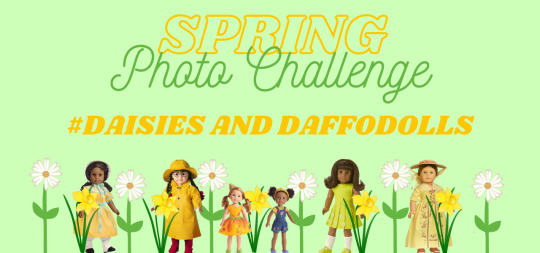
Our next photo challenge, #Daisies and Daffodolls, will begin on May 1st! It’s a creative, for fun, non-competitive daily challenge for you to share pictures of your doll(s). There will be a new prompt each day, listed below to give you a month to prepare, and you can participate in as many or as few days as you’re interested in. There is no judgement whatsoever, so please share regardless of how complex your props are, and don’t worry about posting a prompt late.
First of all, thank you so much to @desertdollranch for helping with the prompts, especially those surrounding AG birthdays and holidays, and for getting this whole photo challenge thing started back in September! And a huge thank you to @lesbianelizabethcole for designing all 5 banners!
The ground rules are the same as in October and December, but I’ll reiterate them for anyone that might be new. Tag all of your prompt posts with #daisies and daffodolls - all three words, complete with spaces. This will allow us to better find and share each other’s posts. You can organize your own posts however you want, but I recommend including the day’s prompt somewhere for context. Also feel free to post on other social medias if you want.
This is not a competition, and there are no prizes, but it should be a lot of fun. Feel free to use any size and brand of doll that you have! American Girl is very popular on doll tumblr, but all other types are welcome as well, including both established (historical or modern) characters and OCs. This could range from 18-inch dolls to Barbies to handmade dolls or porcelain dolls or even paper dolls.
I’ll reblog this post weekly until the beginning of May, and then begin each week of May with the prompt list for that week. Please find a list of all prompts below the cut.

5/1: The first day of each photo challenge is traditionally for seasonal fashion. Does your doll have a favorite spring outfit? Is it cool and light, or are they still bundled in a sweater for the chilly mornings?
5/2: Spring is all about new beginnings. Is your doll learning a new skill or trying a new activity this spring? Or maybe they just met a new person who became important in their life?
5/3: Today is National Textiles Day. Kirsten’s friends gave her a quilt they made after she missed school to help her family. Does your doll have any clothes or other items that are handmade? If not, do they make any textile items themselves? This could be something sewn, knitted, crocheted, or quilted.
5/4: May the 4th be with you! Does your doll like Star Wars? Who is their favorite character? What about other stories? Pick a hero from any movie, show, or book that your doll loves and have them act out a scene as that character.
5/5: Friends are forever. Who are your doll’s closest friends and what do they do together? Maybe they like to play board games or go to the mall or play pretend. Or maybe your doll is planning something special for their friend.
5/6: As the weather gets warmer, it’s the perfect time to head outside. Does your doll play sports, or do they prefer casual games with their friends? Maybe they like picnics or quiet hikes through the woods.
5/7: Happy birthday, Maryellen! Maryellen often feels overlooked in her large family, and she works hard to stand out and show her unique personality. What makes your doll special and unique?

5/8: It’s career day! What does your doll want to do when they grow up? Show them dressed up for and/or acting out their dream job.
5/9: Happy Mother’s Day! Addy and her mother escaped to freedom together, Caroline’s mother ran a shipyard, and Kirsten’s mother encouraged her not to lose heart. Does your doll have a special bond with their mother? How do they celebrate Mother’s Day? If they don’t have a mother or don’t have a good relationship with her, consider today a free space to show us something you really want to but that isn’t included in these prompts.
5/10: Bugs are everywhere! We might avoid some of them, but others are welcomed. Lightning bugs, ladybugs, bumble bees, and dragonflies are a few happy spring bugs. Show your doll doing something bug-themed. They might take a net out to catch bugs or draw a picture of a bug or hold a ladybug they found. Be creative!
5/11: Parties are always fun! Is your doll going to any birthday parties or sleepovers this spring? Maybe they’re attending a wedding or some other celebration? What are their favorite party activities?
5/12: Spring weather can be a relief after the cold and darkness of winter. What is the weather like where your doll is? Foggy? Rainy? Bright and sunny? Show your doll interacting with their local spring weather.
5/13: Everyone needs mentors and heroes. Who does your doll look up to? What have they learned from them or how do they honor them?
5/14: It’s the last day of the school year. What’s your doll’s favorite extracurricular activity or aspect of school that they’ll miss until next fall?

5/15: Happy birthday, Luciana! Luciana loves learning about space and wants to be an astronaut and go to Mars one day. Getting to space involves studying many different things, particularly various fields of science. Show your doll doing something related to space or science.
5/16: Today is National Do Something Nice for your Neighbor Day. What does your doll do that helps others or makes the world a better place?
5/17: Let’s try something different today! If your (OC or non-AG) doll had their own American Girl-style book series, what would be the central theme? What sort of things would happen to them? Show us at least one scene from this hypothetical series.
5/18: Beaches and swimming are iconic activities as the weather gets warmer and people have more free time. Rebecca and her family went to Coney Island for a picnic. Does your doll enjoy picnics, sunbathing, or sandcastles on the beach? Maybe they like to swim for exercise or hang out at the pool with friends? (I do not recommend putting your doll in a public chlorine pool)
5/19: Happy Birthday, Kit! Growing up seeing the effects of the Great Depression on people around her, Kit is determined to report on important things happening to real people. How does your doll relate to current events? Are they involved in activism or spreading awareness? Is there an important social issue that affects them personally or that they feel is very important? Or is there something good happening in the world that they like to think about?
5/20: Spring is a great time for tea parties. What’s in your doll’s teacup? Maybe they’re drinking a fancy tea, or maybe they prefer a refreshing glass of juice.
5/21: Spring is full of baby animals. Show your doll interacting with some sort of baby animal. (Safely! Please don’t grab a real squirrel or bunny!)

5/22: In December we celebrated Pretend to be a Time Traveler Day. I’d like to reprise that, but with a twist: this time, we’re headed into the future! The amount of time and what your doll finds in the future is completely up to you. What do they do while there?
5/23: Cakes and pies and ice cream, oh my! What is your doll’s favorite dessert?
5/24: There may be fewer holidays in spring than in December, but that doesn’t mean there’s nothing to celebrate! Does your doll celebrate Passover or Easter? Or maybe they prefer a more obscure spring holiday to liven things up? Show them participating in whatever celebration you like.
5/25: Yellow is the color of flowers and sunny days and ducklings. Show your doll wearing or using something yellow.
5/26: Happy birthday, Samantha! After her birthday party, Samantha hears Aunt Cornelia speak at a suffragette meeting in New York City. What is a cause that is important to your doll? Show them with a sign supporting or protesting something close to their heart. As an added challenge, use a cause unrelated to the current events prompt.
5/27: It’s summer vacation! What are some of your doll’s favorite activities now that they’re free from school? Alternatively, what are some of their favorite hobbies to do anytime?
5/28: Happy birthday, Cecile! For her birthday, Cecile’s brother Armand gave her a beautiful porcelain doll that looked like her. Does your doll have a favorite doll or toy?
5/29: Late spring and early summer is a great time to go on a road trip or vacation. Where is your doll traveling to, and what are they doing there? Or maybe their family chose a staycation this year - what new fun new things are they discovering close to home?
5/30: Today is National Water a Flower Day. Show your doll interacting with flowers or other plants.
5/31: What is your doll planning for this fall? What are they looking forward to when school starts again? Is a big change approaching as the seasons and leaves turn? What does the future hold for them?
83 notes
·
View notes
Photo

Imagine holding this quilt in your hands. What might it feel like? How would you describe the materials used? What words come to mind as you look at the patterns?
Viewers of this quilt and others like it have often remarked that, while at first it seemed chaotic or haphazard, there is an internal order or rhythm that emerges the longer one looks. Stitched from multiple pieces of cloth—whether from scraps, from cloth objects no longer usable or needed, or from reams of cloth purchased for this purpose—quilts like this one are remarkable works that demonstrate skill in design and in geometry. Whether cut from cloth purchased specifically for quilting or whether the pieces had another “life” before being incorporated into this quilt, all were carefully selected and meticulously placed by the artist Anna Williams, an African American woman whose quilting work gained recognition by collectors in the 1990s and continues to serve as inspiration for textile artists today.
Anna Williams was born to the southeast of Baton Rouge, Louisiana in 1927 where she was raised by her mother and grandmother, both workers on a local plantation. After helping them in the fields during the day, Williams would spend her evenings learning to sew and quilt from her mother and grandmother. “I would pick up the strings of materials that fell to the floor, and I started making dresses for my dolls using the strings,” Williams recalled.
While Williams learned traditional patterns used in quilting from her family, she, like many quilters, improvises when she makes her own quilts rather than adhering to a specific pattern. This quilt is made up of triangles pieced together to form blocks. This “pinwheel block” pattern forms the underlying structure of the quilt, but Williams allows herself the freedom to deviate from it with additional strips of cloth as needed.
Quilts are the product of great labor. There is the creative labor of selecting the cloth with patterns and colors that will fulfill the creator’s vision, and there is the physical labor - the many hours spent carefully cutting and stitching the pieces together. Often historically associated with women (though men have also been identified as quilters), this labor and the creativity involved in the creation of quilts went largely unrecognized until the mid-twentieth century, when museums began to hang quilts as forms of abstract art. Today, quilts continue to be shown in Museums, but are recognized in a multitude of ways - from being hung like abstract art to being appreciated as their own, unique aesthetic and art practice.
Beyond their functionality and decorative beauty, however, quilts are also acts of care. Quilting is often a group activity, bringing together a community. In such gatherings or quilting bees, the stories shared between the artists are valued and the quilting community provides each other with both social and emotional support. When they are finished, quilts are used to care for the community and become layered with new memories. Another quilter, Lucy T. Pettway of Gee’s Bend, Alabama, described using the quilts she made for her children to lay on: “used to spread down quilts all the time at night. I spread a quilt down and let the children sleep until they get cool, you know. Then we'd get in the house.” The process of quilting can also be an act of self-care and means of expression.. As Williams herself noted, her nightly routine of working on her quilts was a way to “keep my mind off my troubles.”
What other ways can art be a part of care networks? What is the relationship between labor and acts of care? Share your thoughts with us, and explore some more of the quilts in our open collection.
Posted by Christina Marinelli Anna Williams (American, 1927-2010). Quilt, 1995. Cotton, synthetics. Brooklyn Museum, Gift in memory of Horace H. Solomon, 2011.18
#howtolook#bkmeducation#anna williams#quilts#bkmdecarts#art education#art ed#close looking#art#artist#quilt makers#community#labor#care#abstract#quilter#brooklyn museum
190 notes
·
View notes
Text
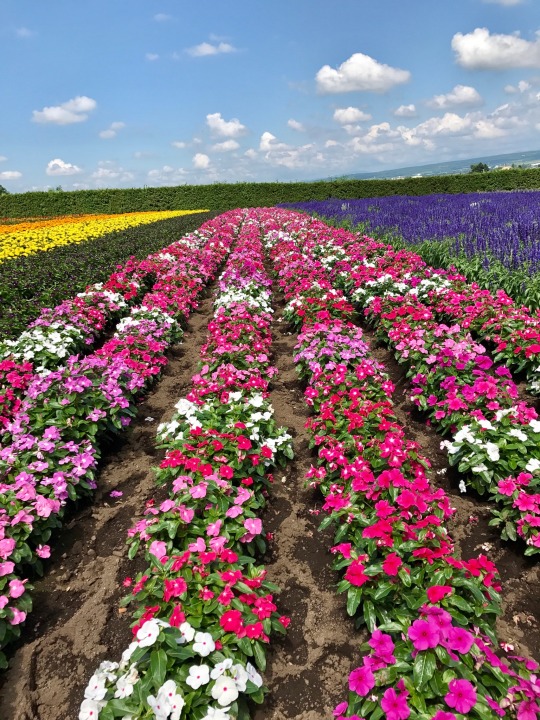

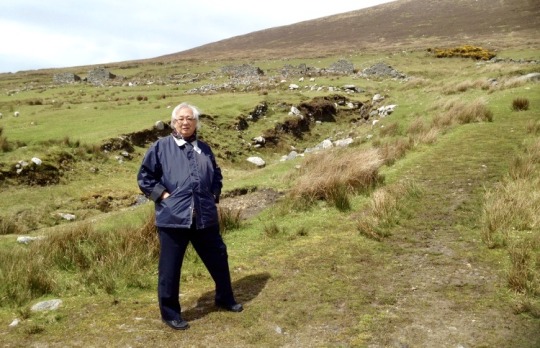
POVERTY AND DEVASTATION
I always remember what it’s like to be in a state of poverty and devastation, and to let go of the past.
I have composed, written and published several poems on these.
Here are three of my personal favorites.
THE OLD HOMETOWN - by J. P. Lee
Fair land of glory loveliest song of the morn
Smiling parks red roses set among thorns
Eager are the pigtailed gals busy to pick
Gallant swains fall in line ready quick
Gay day begins with a warm cheerful visit
Butterflies flapping, floating in their flit
Love songs from the robins for one and all
Joy of my youth ever pleasing as I recall
Blooms linger when seasons cause delay
Young hearts learn patience to wait and stay.
Innocence and ease enrich my simple life
Nature overriding all hardship and strife
Simple folks endear fine humble happiness
My daily loitering brings surpassing gladness
Pausing to admire the glory of dawn
Watching the deer with her little fawn
Grazing on tapestry green along the slope
While bees and grasshoppers shyly elope
I dream of the maiden I secretly love
Like cooing doves wooing in their cove
Crossing a quiet brook to watch her charm
Yonder fence lies her cultivated rainbow farm.
I bless the approaching brilliance of day
When all around me freely lend a play
Contentment fills my soul and cheers my heart
A pastime frolicking joyfully, never to part
Simple pleasures and joys in sweet succession come
Dancing pairs bring sweet memories to beds at home
Peaceful dreams follow when the day is done
Alas! These lovely charms are past and gone.
LEAVING FOR GREENER PASTURE
- by J. P. Lee
To greener pasture thy children flee
From the womb of Mother Earth set free
Relentless weather turns thy greens to yellow
No standing ovation, no cheer, from grass to fellow
Freedom stings not numbing thy pain
New owners destroying thy smiling plain
Thy glassy brooks no longer reflect
Mossy paths mirroring a land neglect
Collapsed greenery make nests for charging ants
From afar comes the loud cry of thy vagrants.
Wealth accumulates while thy land decays
Dry wind carries its stink day after day
Peasantry once boldly gay now in great despair
Stripped off its pride to breathe its own foul air.
Times have altered thy once compassionate train
Rolling swiftly only to dispossess thy grain
Thy packed lawn of fond cheering crowd
Now empty without the sportsmen's shout
Devoid of the peaceful scene that once delights
Even the polo ponies in their thunderous flights.
Staring across the sea standing on its weary shore
In hopes for better as generous provisions come no more.
Bitter sweet is the approaching sense of dreaded hour
To please or confront the tyrant in his rigorous power.
Covering the solitary rounds in wandering
Hopping along thy rugged path, staggering
Awakened remembrance roams thy ruins again
Captures my heart but changing the times in vain.
In all my loiterings on thy plains, Mother Care
I now see the gifts of griefs I have to bear
Give me my final hope in one Almighty I can trust
No memory, no understanding only doing thy will I must
That I may come home to write my story
Around a fireplace to tell all of your history
On all that I have seen, learned or have ever knew
That I may return, be buried where I'll be reborn in you.
THE NEW LAND - by J. P. Lee
Is this what we are told - a new found joy?
Not splendor but a treacherous decoy?
Groups cramped in pigeon holes on a stand
Large families packed in a home without a land
Hoisted home up in the sky swiftly built
No warm blankets just share a family quilt
Good Heaven! Greater sorrow newly imposed
Work! Native walks are as yet to be proposed
O Fair Land, why hast thou caused us to leave
To this distant land unknown, far more aggrieved?
Do thou, sweet Mother, weep in vain
Thine fair tribes now add on to thy pain?
Thine children knock at doors for bread
Chilling bones in hunger desperation led
Good neighbors forced to sell their daughters
Not through any faults of theirs that they should falter
Bless me - why, had we brothers any sister
Our decision would not have been better
Painful to watch sweet little girls in tears
Pretty innocents in their helpless years
I weep as I watch them in their charms,
Shaking wildly in their fathers' arms
Grieving mothers kiss their mindless babes
Strike their breasts looking skyward sadly in gapes
I see the fairies and nymphs degraded
In my dreams I see my heaven has faded
These are the hard truth in times of shame
Best to forget, nothing to share, no one to blame.
In the city their statesmen talk as their ale goes round
Laughing cheering with haughty looks profound
Such luxury migrants can ill afford
Even simple pleasures dismiss accord
Wealthy men arrive from world around
Suits and hats stunning ladies surround
A wanton wealth designed in tempting display
Painful truth in my mind I mindlessly survey
For I am sickened by this man-made pleasure
Toiling in the distrusting hearts of false leisure
Accumulated wealth stored in pride
Buy a lass to play as an obedient bride
Repossess the cuddly space of the poor
For their horses, hounds and more
Lawful acquisition to rob the timid folks
Stealing their meals of oats and yolks
Dressing up their females well adorned
To reign secured while simple folks mourn
Statesmen to their sons divide the wealth acquired
To their siblings, wives, married relatives
as required.
Beating my chest in bitter sweet memory
recall
In senses with unfailing truth reveal it all
Oh past the plain the surging joy prevail
That which I have loved can never fail
That broken teacups I have taken with me
Stirs my will daily sipping my humble tea
No tales no news from barbers or farmers
It's fine - all return at meals as we gather
No theatre, no ballad, no talent time
Everything comes handy in sublime
Make our own feathered balls and stuff
Marbles rolling, guessing games and bluff
Obscure yet it sinks deep in our souls and hearts
Those simple treasures, everlasting will not part
My vacant mind frolicking in the pond
Caress my soul, my spirit neatly bond
Contented on my stool writing my poetry
Pass my time in imagined peasantry
Raise my native strength for greater gain
Instead of indulging in pitiful afflicted pain
Plant my seeds, pull out the weeds annoy
With compliments from God, my daily joy.
©Johnny J P Lee
18 February 2021
Photos Credit J. P. Lee
#instruth#instruthpoems#13cupsofteareblog#gececi 0671#giberrish#followcb#frankl410#acrobat888#warxpunkxmonk#the subservient human#tanou123#smittenbypoetry#writerscreeds#poetryportal#sarah irura#writtenconsiderstions#angiessong67blog#ambroseharte#a peace follower#goodbye#devastation#poverty#leaving home#to greener pasture#farewell#driven away#painful memories#no where to go#delimma
8 notes
·
View notes
Text
The Surprisingly Radical History of Quilting
https://sciencespies.com/history/the-surprisingly-radical-history-of-quilting/
The Surprisingly Radical History of Quilting

Handmade quilts fulfill an array of purposes. They can be practical necessities for cold winter nights; family heirlooms that bring back memories; or, as an exhibition at Ohio’s Toledo Museum of Art reveals, a form of creative, sometimes biting, political art.
Titled “Radical Tradition: American Quilts and Social Change,” the show features about 30 works that range from traditional to contemporary textile art, as well as some mixed-media and virtual takes on the quilt form, per Sarah Rose Sharp of Hyperallergic.
Exhibition highlights include a panel from the AIDS Memorial Quilt and a piece crafted out of suit fabric by liberated survivors of the Dachau concentration camp. Also of note is The Storm, the Whirlwind, and the Earthquake, a life-size quilted portrait of abolitionist Frederick Douglass by artist Bisa Butler.
As Butler told Liz Logan of Smithsonian magazine earlier this year, her vibrant depictions of black figures aim to “give … subjects back an identity that’s been lost.” Independent curator Glenn Adamson added, “Butler is elevating the status of her subjects by making portraits, and also elevating quilting—which is an African American craft tradition—by adding portraiture to it.”

Bisa Butler’s The Storm, the Whirlwind, and the Earthquake depicts Frederick Douglass.
(Courtesy Claire Oliver Gallery, New York)
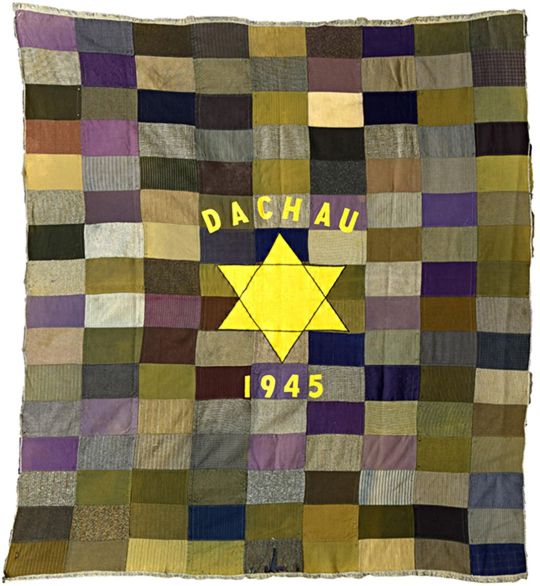
Unknown maker, Dachau 1945, 1945
(Courtesy of Michigan State University Museum / Photographed by Pearl Yee Wong)
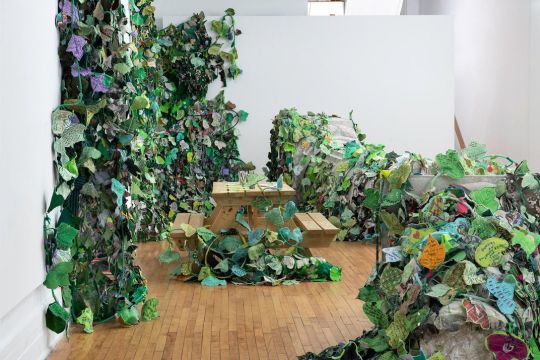
Aaron McIntosh, Invasive Queer Kudzu, 2015–2020
(Courtesy of the Artist, Aaron McIntosh)
Another work in the Toledo show is attributed to a member of the Freedom Quilting Bee, a black rural cooperative in Alabama that supported participants in the 1960s civil rights movement. The piece helps tell the story of how quilting became recognized as a serious art form. According to the Encyclopedia of Alabama, the group’s creations earned accolades from Vogue, drew the attention of such artists as Lee Krasner and sparked a nationwide quilting revival.
Many of the quilts featured in “Radical Tradition” explicitly address the ways in which products of domestic labor, which is often performed by women and people whose work is undercompensated, are rendered invisible. One 1987 piece by Jean Ray Laury satirizes a famous 1963 anti-feminist speech by Arkansas Senator Paul Van Dalsem. Other quilts showcase a variety of styles and themes embraced by 19th-century craftspeople, including the abolition of slavery and Temperance Movement. One late 19th-century “crazy quilt”—a chaotic style without repeating features—uses media including silk ribbons and portraits of political leaders cut from campaign banners.
“A lot of the more historical 19th-century quilts in the exhibition are created by networks of quiltmakers,” curator Lauren Applebaum tells the Observer’s Karen Chernick. “That’s something that has stretched through history.”
Other works go beyond the traditional quilt form. In a section of Aaron McIntosh’s Invasive Queer Kudzu installation, vines created out of fabric, wire and other materials wrap themselves around a room’s furniture. Ben by Faith Ringgold, meanwhile, is a soft mixed media sculpture of an unhoused man.
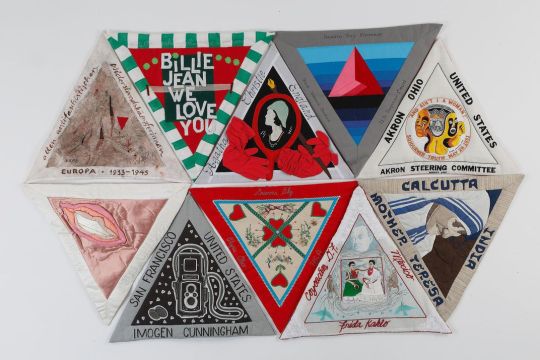
Judy Chicago, International Honor Quilt (IHQ), initiated in 1980
(© 2020 Judy Chicago / Artists Rights Society (ARS), New York)

Abolition Quilt, ca. 1850
( Courtesy of Historic New England / Loan from Mrs. Benjamin F. Pitman)
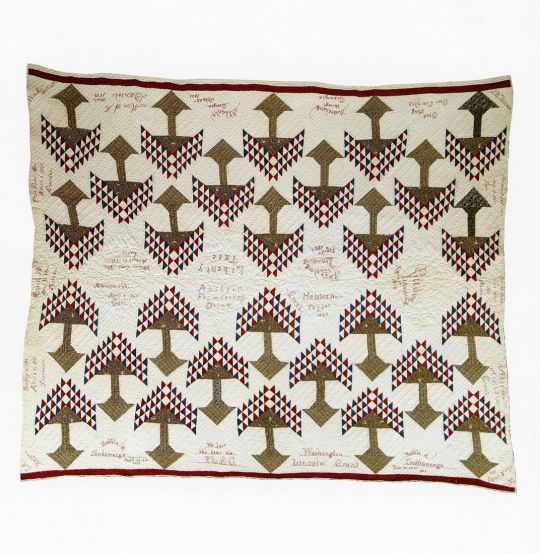
Mrs. S.K. Daniels, Liberty Tree (Temperance Quilt), 1876- 1900
(Courtesy of Michigan State University Museum / Photographed by Pearl Yee Wong)
“In the context of the coronavirus pandemic and our country’s current reckoning with racial injustice, ‘Radical Tradition’ takes on a particular urgency and relevance,” says Applebaum in a statement. “Quilts have always engaged the pressing social and political issues of their time. They have been deployed throughout history by marginalized people to confront instances of violence, oppression and exclusion.”
Prior to the exhibition’s opening, the museum organized a “COVID-19 Virtual Quilting Bee.” Participants from across the United States submitted almost 100 quilt squares ranging from abstract to representative pieces. Organizers “stitched” the squares together digitally so they could be viewed on the museum’s website. One participant, Nettie Badgley of Yorkville, Illinois, wrote that she created her square using strips left over from a cooperative project that made masks for a local hospital.
“To me it represents the chaos of emotions many of us are experiencing,�� she explained. “Up close, I see each individual fabric, different from one another like people. But then from afar I see a beautiful color collaboration that represents all of us coming together to make a difference.”
“Radical Tradition: American Quilts and Social Change” is on view at the Toledo Museum of Art in Ohio through February 14, 2021.
#History
7 notes
·
View notes